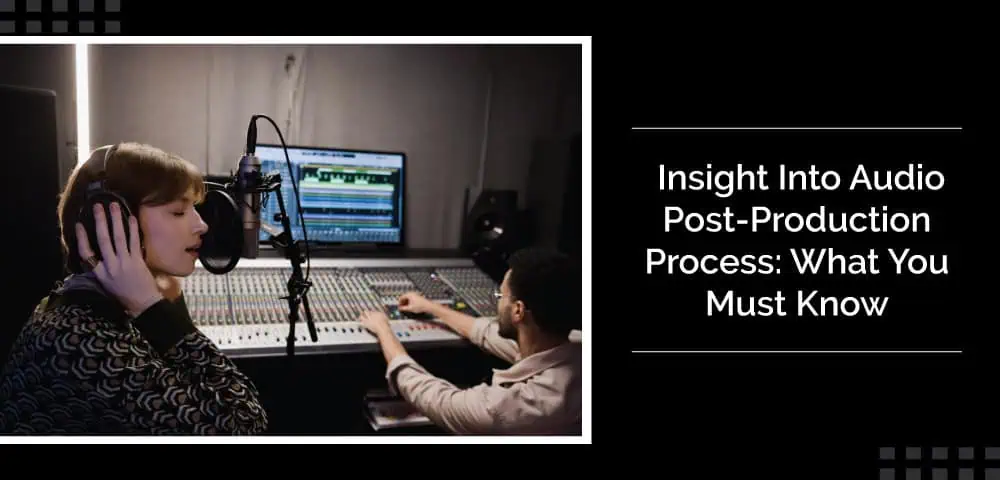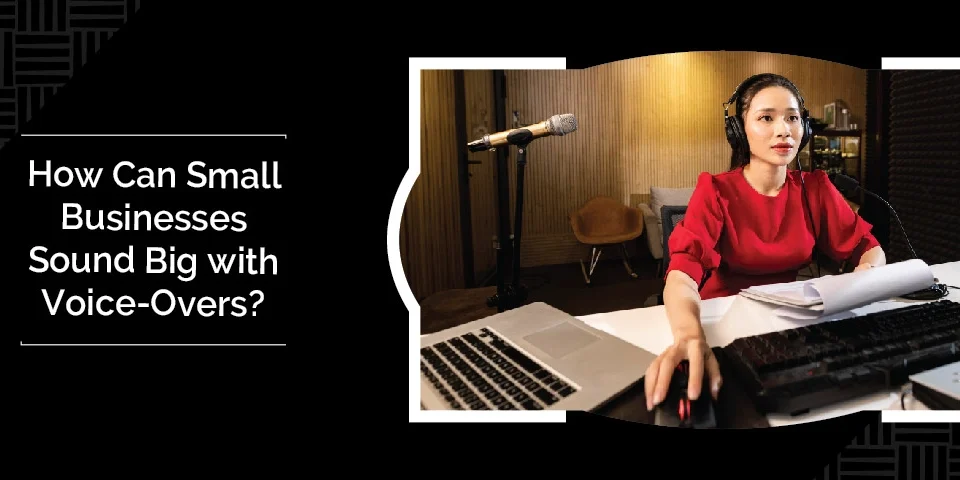
What Is Audio Production And How It Is Done?
February 5, 2025
How To Hire Professional Voice-Overs For Podcasts?
February 28, 2025The purpose of the audio post-production phase is to improve the final production by refining the audio. The process involves different phases which are crucial for the final outcome.
The voice-over post-production involves enhancing the dialogue with sound effects and eliminating unwanted noises. Overall, the scenes are improved using technical and creative techniques to ensure the sound quality meets the highest standards.
Ready to elevate your project with a professional voice-over?
Contact me today to discuss how we can bring your vision to life
Contents
A] What is Audio Post-Production?
Audio post-production is defined as the process of enhancing and refining the audio elements of audio through different tasks such as editing, re-recording, adding sound effects, mixing, and mastering.
The goal of audio post-production is to improve the complete audio quality by correcting errors and inconsistencies. It also aligns the sound with the creative vision of the production goal. When audio undergoes post-production, it enhances clarity, balances sound elements, and creates the right mood. You can find
The process is essential for all major audio-visual projects, such as films, online content, video games, documentaries, TV shows, and podcasts. Keep in mind that the post-production sound requires significant time and effort from the voice-over artist team to create impactful sound and visuals. You will find a reputed audio production studio in Mumbai.
B] What Does the Post-Production Process Look Like?
Let’s take a deep insight into the process of post-audio production in Mumbai.
1. Sound Design
This process involves a combination of sound effects and music to modify and create a sound design element. Sound effects editors take the responsibility for creating and selecting suitable effects, while sound designers begin to integrate these elements. They combine effects and ambient sounds into a unified composition that strengthens the narration, storytelling, script, dialogues, emotion, and atmosphere. The four important elements of sound design are ambience, foley sounds, audio effects, and voice-over.
2. Dialogue Editing And ADR
Dialogue editing is a major part of post-production. The traditional method is now replaced with ADR or Automated Dialogue Replacement. It is one of the post-production techniques used in filmmaking. In this process, actors re-record their dialogue in order to enhance audio quality and refine or accommodate script changes. ADR is used for several purposes, most commonly to capture a clearer version of a line. Whether it is due to technical issues like background noise or for creative reasons, such as improving performance, ADR is an ideal option. A professional Voice-over artist in Mumbai can help you in this process.
3. Removing Background Noise
Noisy backgrounds are removed in the audio post-production. For this, the voice experts use high-quality background noise removal software. Background noise removal software, also known as noise-cancelling software, detects your voice in recordings and eliminates other sounds that are not part of your speech. This is why voice-over artists prefer to record in a room with optimal acoustics, as the room’s acoustics influence how sound waves travel and reflect.
4. Recording Missing Elements
At times, some audio clips have missing elements which is a result of technical issues or manual errors. In the audio post-production process, the missing elements are recorded again by the voice-over artists. They capture any audio that was not adequately recorded during audio production, such as additional dialogue, sound effects, or background noise. This process ensures that the final audio mix is complete, and cohesive, and enhances the overall quality of the audio for a seamless listening experience.
5. Foley Recording
Foley involves the recreation of everyday sound effects added to films, videos, and other media during the post-production process in order to take the audio quality to the next level. The technique is named after sound effects artist Jack Foley. Foley sounds is a voice-over technique that enriches the media content’s auditory experience, as it involves creating and “performing” everyday sounds for films and TV shows.
6. Fine Tuning The Mix
Fine-tuning is done in the mastering phase of the voice-over recording. Once the final mix is completed and approved by the sound supervisor or voice-over artist, you can move on to the next process of meeting standards and regulations. Typically, a separate individual handles mastering, but in some cases, the voice-over artist may also take on this role. This stage involves refining the mix to ensure audio consistency across the entire project. It also ensures the audio content is ready to undergo a loudness level meeting test by industry standards or meet the requirements of the platform where the content will be displayed.
7. Set Loudness standards
Before exporting and delivering the audio content in the specified formats by the voice-over production, it has to meet the loudness standards. The artists and the production team will provide you with the standard delivery formats and methods beforehand. Loudness standards are a set of guidelines that are based on specific algorithms. These are designed to ensure audio mixes maintain consistent volume across different platforms, such as streaming services, websites, and radio or TV stations. These standards help deliver a uniform listening experience for audiences regardless of the medium. Audio content undergoing voice-over editing in the post-production phase must meet the regulatory standards.
Ready to elevate your project with a professional voice-over?
Contact me today to discuss how we can bring your vision to life
Conclusion
Did you get a deep understanding of audio post-processing? You can implement the steps of post-production only with the help of voice-over audio professionals. Make sure you understand each step in detail starting from sound design to meeting loudness standards. It is better to consult an expert voice-over artist to help understand the steps more in detail. Keep in mind that you cannot deliver your content without undergoing this phase.
If you want to improve the audio quality of your content before publishing it, get in touch with a voice-over artist providing comprehensive audio post-production. If you are looking for one, contact me today.

Peter Abraham
Peter Abraham is a versatile voice-over artist based in Mumbai working in the voiceover industry since 2009. With a passion for storytelling and meticulous attention to detail in every project, he brings scripts to life with his captivating voice and professional delivery, exceeding client expectations. Whether it's a commercial or an audiobook, Peter specializes in a wide range of voice-over work, ensuring the highest quality.




